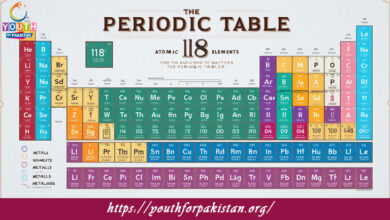Newton’s Second Law Of Motion MDCAT MCQs with Answers

Welcome to the Newton’s Second Law Of Motion MDCAT MCQs with Answers. In this post, we have shared Newton’s Second Law Of Motion Multiple Choice Questions and Answers for PMC MDCAT 2024. Each question in MDCAT Physics offers a chance to enhance your knowledge regarding Newton’s Second Law Of Motion MCQs in this MDCAT Online Test.
Newton’s Second Law Of Motion MDCAT MCQs Test Preparations
Newton’s Second Law of Motion states that force is equal to:
a) Mass divided by acceleration
b) Mass multiplied by acceleration
c) Acceleration divided by mass
d) Force divided by mass
If the mass of an object is doubled while the force applied remains constant, the acceleration:
a) Doubles
b) Halves
c) Stays the same
d) Quadruples
Which of the following correctly represents Newton’s Second Law?
a) F = m + a
b) F = m / a
c) F = m × a
d) F = a / m
An object with a mass of 10 kg experiences a force of 50 N. Its acceleration is:
a) 5 m/s²
b) 50 m/s²
c) 0.2 m/s²
d) 10 m/s²
The acceleration of an object is directly proportional to the:
a) Mass of the object
b) Force applied on the object
c) Distance traveled
d) Speed of the object
If a 2 kg object is accelerated at 3 m/s², the force applied is:
a) 6 N
b) 5 N
c) 1.5 N
d) 0.67 N
Which of the following units is used to measure force?
a) Kilogram (kg)
b) Newton (N)
c) Meter per second (m/s)
d) Joule (J)
If the force applied to an object is increased, its acceleration:
a) Increases
b) Decreases
c) Remains constant
d) Becomes zero
For a given mass, if the acceleration is doubled, the force applied:
a) Doubles
b) Halves
c) Quadruples
d) Remains the same
According to Newton’s Second Law, if two objects with different masses are subjected to the same force, the object with the smaller mass will have:
a) Less acceleration
b) More acceleration
c) The same acceleration
d) No acceleration
The equation
=
×
F=m×a describes:
a) Newton’s First Law
b) Newton’s Second Law
c) Newton’s Third Law
d) Law of Universal Gravitation
If the force applied on an object is tripled and the mass remains constant, the acceleration:
a) Triples
b) Halves
c) Remains the same
d) Becomes zero
An object with a mass of 8 kg experiences a force of 24 N. Its acceleration is:
a) 2 m/s²
b) 3 m/s²
c) 4 m/s²
d) 6 m/s²
Newton’s Second Law implies that force is:
a) Inversely proportional to acceleration
b) Directly proportional to mass
c) Directly proportional to velocity
d) Inversely proportional to mass
If the acceleration of an object is halved while the force remains constant, the mass:
a) Doubles
b) Halves
c) Stays the same
d) Quadruples
A 5 kg object is acted upon by a force of 20 N. What is the object’s acceleration?
a) 2 m/s²
b) 4 m/s²
c) 5 m/s²
d) 10 m/s²
When a constant force is applied to an object and its mass is increased, the acceleration:
a) Increases
b) Decreases
c) Remains the same
d) Becomes zero
The relationship between force, mass, and acceleration is described by which of Newton’s Laws?
a) First Law
b) Second Law
c) Third Law
d) Law of Gravitation
A car accelerates when the driver applies a force. According to Newton’s Second Law, if the mass of the car increases while the force applied remains constant, the acceleration:
a) Increases
b) Decreases
c) Remains constant
d) Becomes zero
If the force acting on an object is increased from 10 N to 30 N, and the mass remains constant, the acceleration:
a) Increases by a factor of 3
b) Decreases by a factor of 3
c) Remains the same
d) Increases by a factor of 10
An object with a mass of 15 kg is subjected to an acceleration of 4 m/s². The force required is:
a) 10 N
b) 20 N
c) 60 N
d) 100 N
If an object experiences a force of 50 N and has an acceleration of 5 m/s², its mass is:
a) 10 kg
b) 25 kg
c) 50 kg
d) 100 kg
To increase the acceleration of an object, you can either:
a) Increase the mass
b) Decrease the force
c) Increase the force
d) Decrease the acceleration
The force needed to accelerate a 2 kg object at 6 m/s² is:
a) 6 N
b) 8 N
c) 12 N
d) 18 N
According to Newton’s Second Law, acceleration is:
a) Inversely proportional to force
b) Directly proportional to mass
c) Directly proportional to force
d) Inversely proportional to velocity
If the mass of an object is halved and the force remains constant, its acceleration:
a) Doubles
b) Halves
c) Remains the same
d) Becomes zero
The acceleration of an object is 2 m/s² when a force of 10 N is applied. The mass of the object is:
a) 2 kg
b) 5 kg
c) 10 kg
d) 20 kg
An object with a mass of 12 kg experiences a force of 48 N. Its acceleration is:
a) 2 m/s²
b) 3 m/s²
c) 4 m/s²
d) 6 m/s²
If the force applied to an object is reduced to half while the mass remains constant, the acceleration:
a) Doubles
b) Halves
c) Remains the same
d) Quadruples
A car with a mass of 1000 kg accelerates at 2 m/s². The force applied is:
a) 500 N
b) 1000 N
c) 2000 N
d) 4000 N
The acceleration of an object can be found by:
a) Dividing the force by the mass
b) Multiplying the mass by the force
c) Adding the force to the mass
d) Subtracting the mass from the force
When a 4 kg object is subjected to a force of 12 N, its acceleration is:
a) 2 m/s²
b) 3 m/s²
c) 4 m/s²
d) 6 m/s²
According to Newton’s Second Law, if the force on an object is constant and the mass increases, the acceleration:
a) Decreases
b) Increases
c) Stays the same
d) Becomes zero
A 10 kg object experiences an acceleration of 5 m/s². The force acting on the object is:
a) 5 N
b) 10 N
c) 50 N
d) 100 N
If the acceleration of an object is tripled and the force applied remains the same, the mass:
a) Increases
b) Decreases
c) Remains constant
d) Becomes zero
Newton’s Second Law can be used to determine:
a) The velocity of an object
b) The acceleration of an object
c) The distance traveled
d) The gravitational force
If the mass of an object is 4 kg and it is subjected to an acceleration of 3 m/s², the force is:
a) 7 N
b) 12 N
c) 15 N
d) 18 N
When the force applied to an object is doubled and the mass remains constant, the acceleration:
a) Doubles
b) Halves
c) Quadruples
d) Stays the same
The force required to accelerate a 3 kg object at 4 m/s² is:
a) 7 N
b) 12 N
c) 15 N
d) 24 N
A 6 kg object is accelerated by a force of 18 N. The acceleration is:
a) 2 m/s²
b) 3 m/s²
c) 6 m/s²
d) 9 m/s²
If you are interested to enhance your knowledge regarding Physics, Chemistry, Computer, and Biology please click on the link of each category, you will be redirected to dedicated website for each category.




